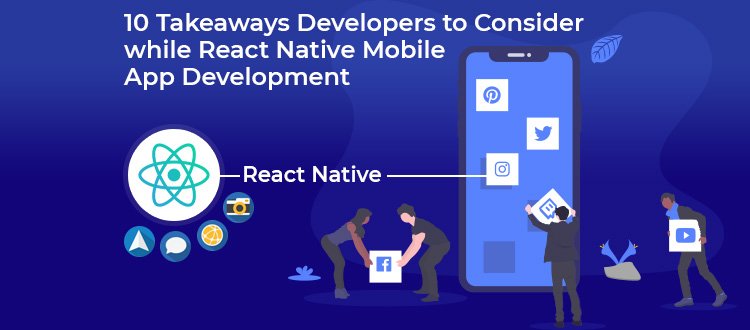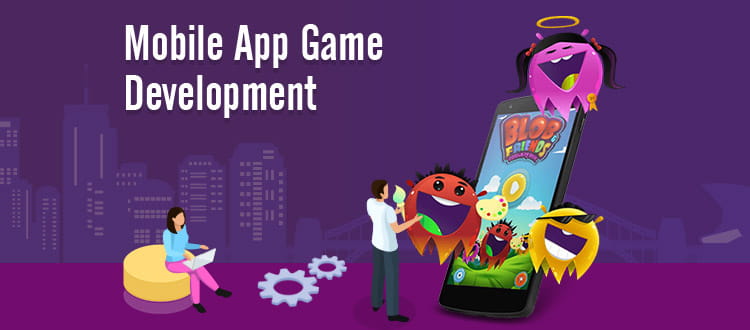Planning to develop a mobile app, but confused about which cross-platform framework to use?
Don’t worry, because here is the solution!!
The answer to your question is React Native.
So let us now understand what is React Native and what you should consider if you hire react developer for developing mobile applications with React Native.
React Native is an amazing mobile app development framework from Facebook for cross-platform applications development. It allows you to build mobile apps by using JavaScript. Other than this, you can use a single set of libraries and components for app development for both iOS and Android.
Initially, React Native was only available for iOS but now it is being used for Android, VR, and Universal Windows as well.
For developing cross-platform mobile apps, React Native is one of the most preferred frameworks which runs on both iOS and Android platforms. This, in turn, ends up the need of developing separate apps for different platforms and helps in saving money and time going to spend in app development.
There are several apps available in the market which are highly popular and built on this framework. For example- Instagram, Airbnb, Walmart, UberEats, Skype, etc.
So, if you are willing to develop your app on React Native, then don’t hesitate to hire react native developer. To help you out, I have listed some things which you should keep in mind before developing mobile apps with React Native.
Points to Remember While React Native App Development
1. The purpose behind developing React Native app
As we are all aware of the popularity of React Native, it is among the top leading frameworks for cross-platform mobile app development. But it doesn’t mean that every app must be developed in this framework.
App development is entirely based on your requirements. If your sole objective is to build a multi-platform mobile application. You can do this by using WebView. However, you have to publish your app on both platforms. People are doing this already.
But if you are wishing for high performance and stunning visuals using this approach, you will definitely face disappointment here. The applications developed using WebView are not capable of managing heavy tasks and providing a better user experience as compared to a native app.
Hire remote react developers who can build highly performed applications using React Native. They can use underlying components that are barely accessible from a WebView application.
2. Opt for the right navigation library
React Native was launched in the app development sector four years ago in the year 2015. Since then it’s waiting for an efficient solution or a replacement for the old navigator component. So the developers have to rely mostly on community solutions.
Hire dedicated react js developer, who can help you select the right navigation library because it plays a vital role in making of mobile app. So it is required to choose the right navigation library at the beginning of the project considering your requirements.
React Native offers two types of navigation libraries such as the JavaScript navigators and the Native navigators. The JavaScript navigators are known for easier setup while the Native navigators are popular for their outstanding performance.
So, it is required to decide first which one you need and want to opt from the varieties of options available.
3. Use Expo-Kit sensibly
Expo-Kit is one of the best open source tool-chains provided by the React Native framework. It is free, however, it comes with all sorts of limitations. Sometimes, situations arise that you have to eject Expo-Kit later. It is because React Native does not support third-party packages with custom native modules.
So, the sensible use of Expo-Kit is a must. Expo-Kit can be used when you want a quick playground for the development of a new app that’s too with the help of a create-react-native-app package. Besides this, if you are aware that all your requirements related to the app will be fulfilled by the solutions offered by Expo.
4. React Native styling
The working of the React Native Style is almost similar to CSS, however, sometimes you have to face disappointment. Because React Native does not support cascade, provides limited inheritance, even if it does not support many properties as well.
But that’s not an issue as we know nothing is perfect in this world. Now the important thing is to find workarounds or alternatives to achieve what you want. In React Native, every element is flex by default. So, if you want to neglect issues to a greater extent try to keep components small. It will keep both the user interface and styles fixed on a single page.
5. App’s scaling for different devices and screen sizes
Keeping scaling of different devices and screen sizes in mind is also a must when you are working on React Native App Development. Usually, there are two options available with this framework.
You can choose for either different UI/UX based on screen size or go for the same for all screen sizes.
Most developers go with the first option for most of the applications whereas they opt for the later one in case they are developing a gaming app.
To identify the sizes of screen, you can use the Dimensions API or third-party package like React Native Responsive UI.
Related Article: How to Build a Mobile Wallet App for a Digital Solution
6. React Native App Performance
React Native allows working in short development cycles which helps in completing projects on time. The processing here is quick and it does not use any heavy component which will let you wait until it loads.
The hot reload feature helps in bundling processes rapidly and allows you to see even a small change on the emulator or your device in no time.
7. Animations
Want to build a React Native app using animations? Please give a second thought to your decision. It is understood that animations are really important these days but React Native is not that effective in the animation and desperately looking for improvement.
You can use animations but every time you have to test the animation on the device. Because Emulators are not capable of giving proper feedback and will leave you in doubt. But the use of useNativeDriver = true, helps you attain better performance wherever possible.
8. Use CSS-in-JS wrapper library
In React Native, you can only use the CSS written in JavaScript. Still, if you want to write exciting CSS again and JSX looks more semantic, use of Styled Components library would be a better option instead of using StyleSheet.create method. Also, it will improve your CSS experience to React Native to a newer level.
Related Article: How to Design and Develop a Fantasy Sport App like Dream11?
9. Transform any web project into a mobile version easily
Code reusability is one of the major advantages of the React Native. It allows you to release a single update for both platforms at a time. By doing so, you will easily be able to detect bugs and fix them. Even the developers who haven’t worked on the project can easily understand the code without any hassle.
React Native not only enhances productivity but also provides flexibility for the working team. Due to which, the time consumption for Quality Assurance reduces and your decision of transforming a web project into a mobile gets a physical form seamlessly.
10. Few other things to know while React Native development
Other than the above-mentioned points, the developers should also be aware of the following minor things which will help them develop a cross-platform app on React Native.
React Native comes with all sorts of limitations as it does not support all the properties including Image Style Props, View Style Props, Text Style Props, Shorthand properties.
So choosing popular properties in your project is the right approach. For example, instead of making use of margin, you can go with margin-bottom, margin-top, margin-left and margin-right.
React Native does not provide DOM elements, so we have to work on the native elements.
You can not use percentage values for all properties in React Native. If you try to do so, the framework will either ignore it or crash your application.
By default, React Native supports flex. So, to make use of it, you have to learn it and then can use it wherever you want. Sometimes it will help you to work easily.
If you have set up your mind and are ready to create a react native mobile app then you can contact us as we have Reactjs developers for hire.
Final Words
After a brief discussion on almost all the major points, you will get to know what to keep in mind while developing mobile apps with React Native.
There are certain merits and demerits in working with React Native. So as a developer you should know about all these factors because it will help you to make your client understand exactly what can be achieved with React Native for cross-platform mobile app development.
No doubt, React Native is simple, easy to learn, cost-effective, and time-saving in terms of cross-platform mobile app development.
So if you are planning to build a mobile app using React Native, you can consider one of the renowned react native app development companies to hire react developer. Considering your requirements, he will suggest the best way to get what you want with your mobile app.
Great Together!

![How to Create an App like Careem? [Cost in 2026]](https://theninehertz.com/wp-content/uploads/2024/09/how-to-create-an-app-like-careem.webp)







